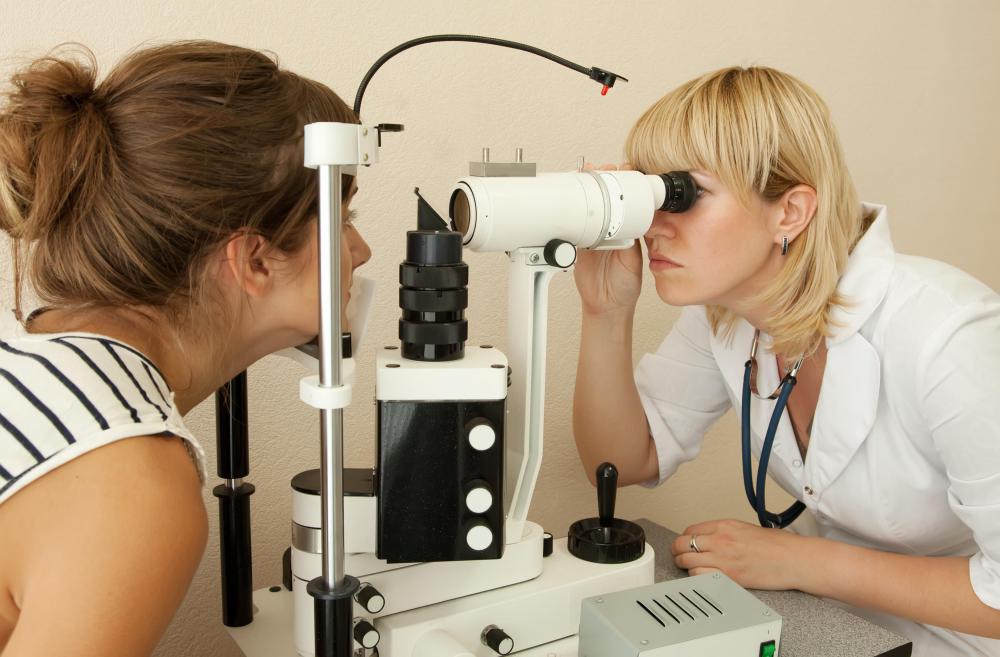At WiseGEEK, we're committed to delivering accurate, trustworthy information. Our expert-authored content is rigorously fact-checked and sourced from credible authorities. Discover how we uphold the highest standards in providing you with reliable knowledge.
What Are the Most Common Corticosteroid Side Effects?
The most common corticosteroid side effects vary depending on the type of steroids used. Oral corticosteroids tend to cause more side effects than other forms of the medication, such as topical corticosteroids or inhaled versions, because the drug travels through the entire body. Common oral corticosteroid side effects include increased blood pressure as well as glaucoma and deposits of fat in the abdominal area. Thin skin is another common side effect that can occur with the use of both topical and oral corticosteroids.
One of the common corticosteroid side effects is a buildup of pressure in the eye, or glaucoma. The risk for this side effect is greater in patients who have a family history of the disease or suffer from a connective tissue disorder, such as rheumatoid arthritis. Patients with diabetes also have an increased risk for glaucoma. Another side effect from oral corticosteroids that may occur after long-term use is the buildup of cataracts in the eyes.

An increase in blood pressure is another common side effect from oral corticosteroid medicines. With extended use, a patient may also notice an increase in blood sugar levels. Fluid retention and an increase in weight are other corticosteroid side effects. Along with weight gain, many patients notice a buildup of fat deposits in the stomach and neck areas.

While the side effects of inhaled or topical corticosteroids are less pervasive, there are still some common side effects. A patient using an inhaled corticosteroid to treat asthma may experience irritation in the throat, which can lead to hoarseness or coughing. To prevent these corticosteroid side effects, a patient should rinse out her mouth after using an inhaler.

Both topical and oral medications can cause the skin to become thinner, especially with extended use. Oral medications may make it easier for the skin to bruise and can slow down the time it takes a cut or other wound to heal. Using topical corticosteroids for a long period of time can cause lesions or red marks to form on the skin.
A patient can take several steps to reduce the most common corticosteroid side effects. If the medicine is needed to treat asthma, she may choose to use an inhaled form, which travels directly to the lungs, rather than an oral form, which spreads throughout the body. Some patients take very low doses of the medicine to avoid side effects while others use the medication for only a short period of time.
AS FEATURED ON:
AS FEATURED ON:

















Discuss this Article
Post your comments